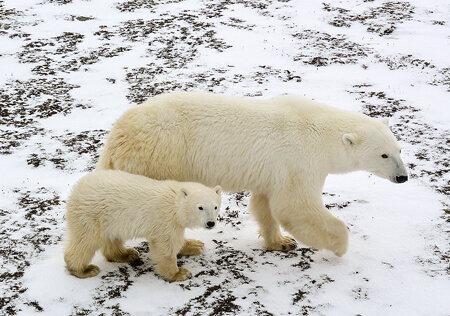Ever since seeing grizzlies roaming around the tundra in Alaska, I have always wanted to photograph polar bears. And that happened last week on a trip with ANPW to Churchill, Manitoba. We had a terrific group, and saw lots of bears including sows and cubs. Our days were filled roaming the edges of Hudson Bay in a tundra buggy with lenses out the windows aimed at big white moving objects. The photography experience is excellent…as long as the ice hasn’t formed on the bay at which point the bears head out onto Hudson Bay to hunt seals.
The lenses of choice on this trip are one body with a long lens, and another body with shorter telephoto for close up bear encounters. I used my 200-400mm with a 1.4x and occasionally shot my 80-400mm when bears got close. Autofocus can be tough in low light, although in overcast skies I was able to use autofocus a lot.
While bears are the main attraction, snowy owls and gyrfalcon also frequent this area. We didn’t see either of these, but we did encounter snow white willow ptarmigan in the bushes. One of the most comical sights of the trip was watching a polar bear wallow through a covey of ptarmigan oblivious to their presence.
What lens did I use for the bear face shots two feet below the viewing platform? I have been using the new Nikon AW1 for quite some time now, and I am very impressed. I’ll do more of a review later, but this mirrorless camera is waterproof, shockproof and freeze proof. The AW1 has a 11-27.5mm lens, just the right focal length for covering up close action. The sow and cub shot was taken with this camera.
Speaking of winter, we still have space left on our winter Yellowstone trip. This will be the 8th year in a row we have done this trip, and it is always a highlight. Last year on our first day we saw otter, bald eagles, trumpeter swans, elk, bison, coyote, fox, wolf and a bobcat (we photographed the cat for 1 hour, amazing!). Come join us if you can!



